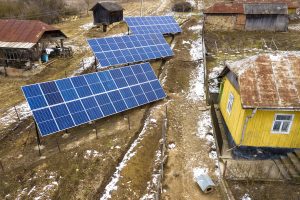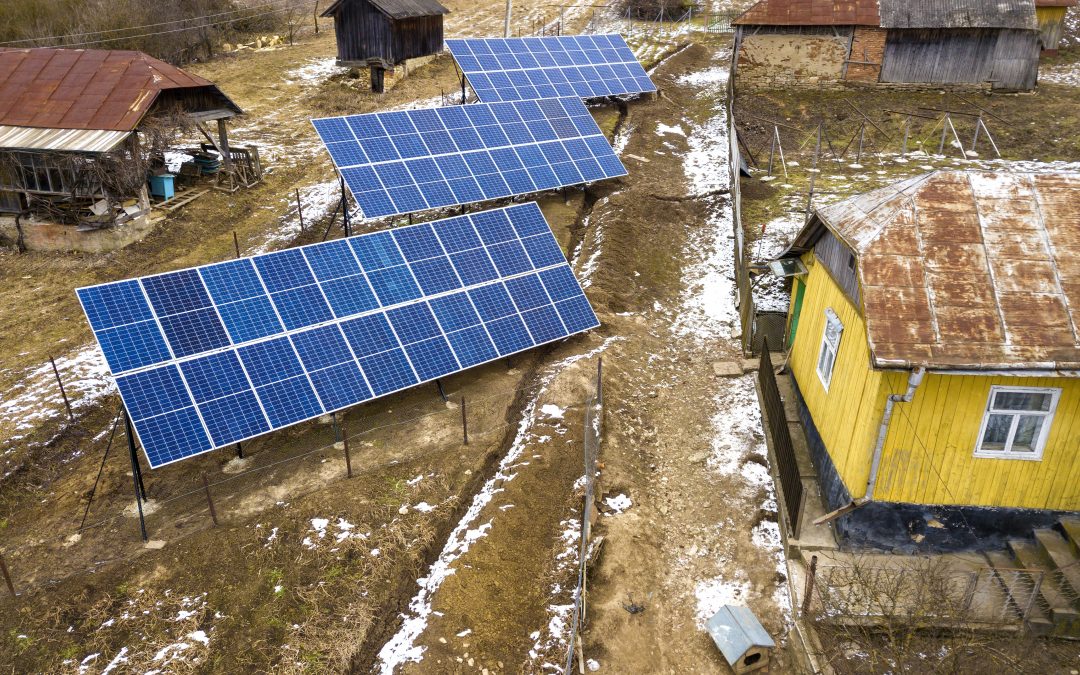Solar energy has emerged as a transformative force in developing countries or off-grid communities, where millions of people still live without access to reliable electricity. In regions where traditional power grids are either unreliable or non-existent, solar power offers a sustainable, cost-effective solution to bridging the energy gap. By providing electricity to off-grid areas, solar energy is not only improving the quality of life but also opening up new economic opportunities for communities that have long been left behind.
The Energy Challenge in Developing Countries
According to the International Energy Agency (IEA), around 733 million people globally lacked access to electricity as of 2021, with the majority living in sub-Saharan Africa and South Asia. In many of these regions, extending the conventional power grid is either logistically challenging or prohibitively expensive due to rugged terrain, low population density, and inadequate infrastructure. As a result, millions of people rely on kerosene lamps, diesel generators, or biomass for lighting and power, which are not only inefficient and expensive but also harmful to health and the environment.
The lack of reliable electricity has far-reaching consequences. It limits access to education, healthcare, and clean water, and hampers economic growth. For instance, without electricity, children cannot study after dark, health clinics cannot refrigerate vaccines, and small businesses cannot operate machinery or keep perishable goods. This energy poverty perpetuates a cycle of poverty, making it difficult for these communities to improve their standard of living.
Solar Power as a Game-Changer
Solar energy offers a viable and scalable solution to these challenges. Unlike traditional power plants that require significant infrastructure and fuel supply chains, solar panels can be installed in remote locations with minimal logistical constraints. Solar power systems, particularly off-grid and mini-grid solutions, are being increasingly deployed in developing countries to provide electricity to communities that have never had it before.
- Off-Grid Solar Systems: These are stand-alone solar power systems that are not connected to the national electricity grid. They typically include solar panels, a battery storage system, and an inverter. Off-grid solar systems can power homes, schools, and health clinics, providing a reliable source of electricity for lighting, communication devices, refrigeration, and more. In countries like Kenya, Uganda, and Bangladesh, off-grid solar systems have been a game-changer, enabling households to access clean and affordable electricity.
- Solar Mini-Grids: Mini-grids are localized, small-scale electricity networks that use solar power (often combined with other renewable sources) to supply electricity to a community or village. They are particularly useful in areas where extending the national grid is not feasible. Solar mini-grids can power homes, businesses, schools, and medical facilities, fostering economic development and improving living standards. In Tanzania, for example, solar mini-grids have been instrumental in providing electricity to rural communities, spurring entrepreneurship and improving access to education and healthcare.
Economic and Social Benefits
The impact of solar energy on off-grid communities extends beyond just providing electricity. It is a catalyst for economic development and social progress:
- Improved Education: Access to electricity enables schools to extend their hours, allowing students to study in the evening. It also powers educational tools like computers and internet access, providing students with better learning opportunities.
- Enhanced Healthcare: With solar power, health clinics can operate more efficiently, storing vaccines and medicines that require refrigeration, using electronic medical equipment, and providing better lighting for patient care.
- Economic Opportunities: Solar energy creates new economic opportunities by enabling small businesses to operate more efficiently. For instance, solar-powered water pumps improve agricultural productivity, and solar dryers help farmers preserve crops, reducing post-harvest losses. Additionally, the solar industry itself generates jobs in installation, maintenance, and manufacturing.
- Environmental and Health Benefits: Solar power reduces the reliance on fossil fuels like kerosene and diesel, which are not only expensive but also produce harmful emissions. By replacing these with clean energy, solar power contributes to better air quality and reduces health risks associated with indoor air pollution.
Success Stories and Future Prospects
Several developing countries have embraced solar energy with remarkable success. For example, in Bangladesh, the government’s Solar Home System (SHS) program has brought electricity to over 4 million households, benefiting around 20 million people. Similarly, India’s ambitious solar initiatives, including the Pradhan Mantri Sahaj Bijli Har Ghar Yojana (Saubhagya) scheme, aim to provide electricity to all households, with solar energy playing a key role in reaching the most remote areas.
Looking ahead, the potential for solar energy in developing countries is immense. The falling cost of solar technology, combined with innovative financing models such as pay-as-you-go (PAYG) systems, is making solar power more accessible to low-income households. Moreover, international support from organizations like the World Bank and the African Development Bank is accelerating the deployment of solar energy in regions that need it most.
Conclusion
Solar energy is not just a source of electricity; it is a powerful tool for social and economic transformation in developing countries. By bringing electricity to off-grid areas, solar power is improving the quality of life, creating economic opportunities, and paving the way for sustainable development. As the world continues to seek solutions to energy poverty, solar power stands out as a beacon of hope for millions of people striving for a brighter, more prosperous future.
References:
- International Energy Agency (IEA). (2021). “World Energy Outlook 2021.” Retrieved from IEA Website.
- United Nations Development Programme (UNDP). (2020). “Renewable Energy for Sustainable Development.” Retrieved from UNDP Website.
- World Bank. (2020). “Off-Grid Solar Market Trends Report 2020.” Retrieved from World Bank Website.
- African Development Bank. (2021). “Powering Africa: Solar Energy Solutions for the Continent.” Retrieved from AfDB Website.

Aerial top view of stand-alone blue shiny solar photo voltaic panel systems producing renewable clean energy in rural residential area on sunny winter day.


Recent Comments